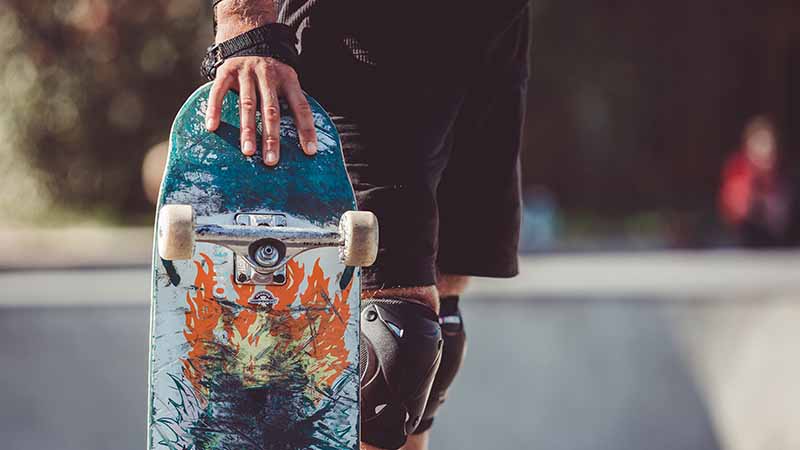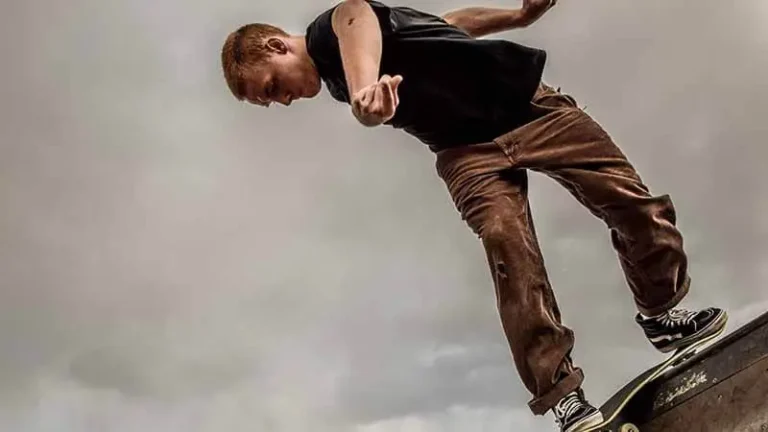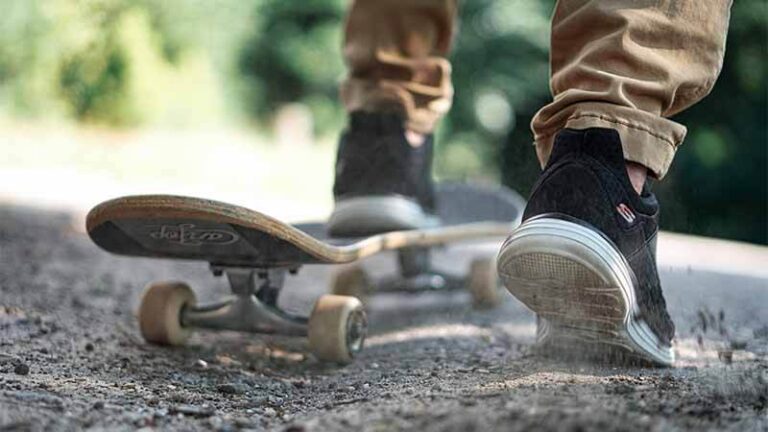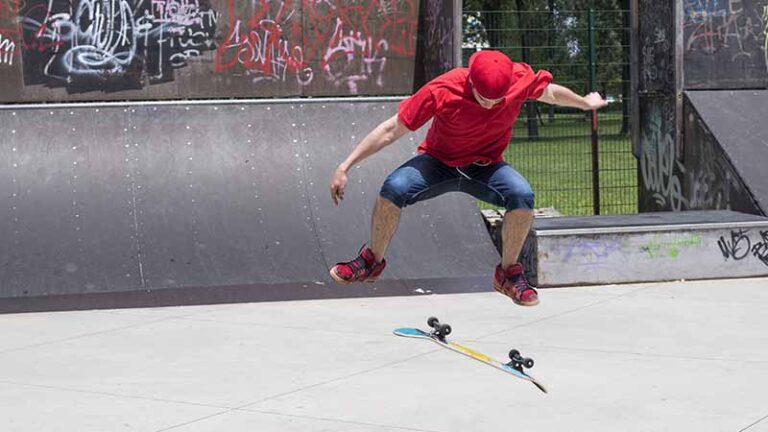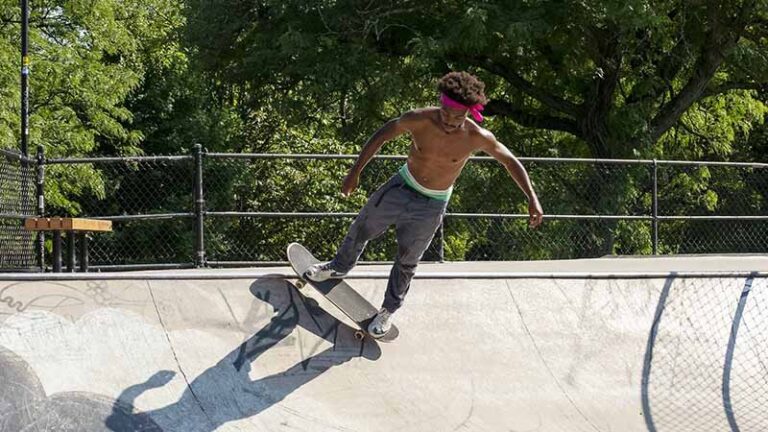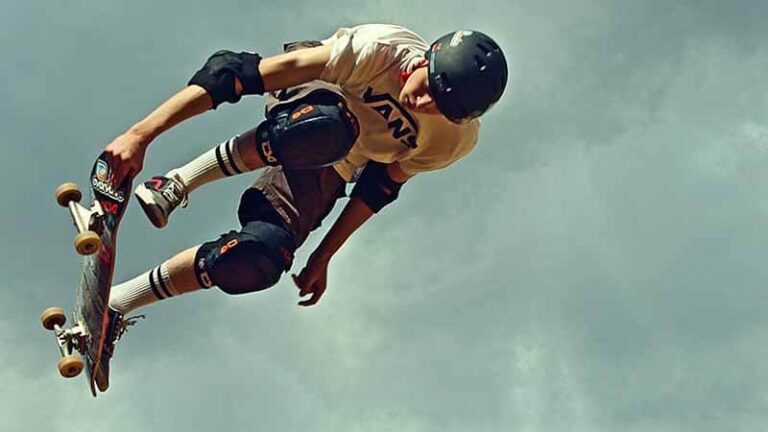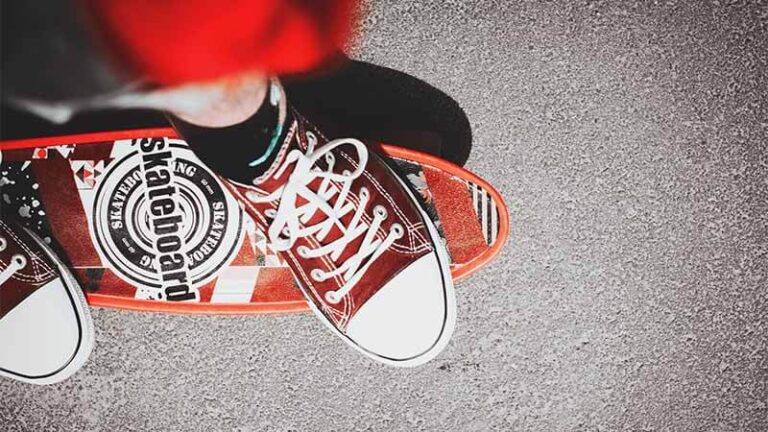How to Film Skateboarding
Importance of skateboarding videos
Skating videos are very important in the skateboarding world. They give a venue for skateboarders to demonstrate their abilities and inventiveness, as well as a source of inspiration and motivation for other skateboarders. Skateboarding videos are also an important part of the culture, with numerous legendary videos and filmmakers helping to influence the sport through the years. Skateboarding videos can also be used for marketing and promotion, both for individual skateboarders and skateboarding brands.
Basics of filming skateboarding
Skateboarding videography might be difficult, but with some fundamental knowledge and skills, anyone can create a spectacular skateboarding video. The following are some fundamentals of skating filming:
- Camera: To capture the fast-paced action of skating, you’ll need a camera with a rapid shutter speed and a high frame rate. A wide-angle lens is also useful for capturing the skateboarder’s complete range of motion.
- Shooting Techniques: To capture skating, you can utilize a variety of filming techniques, including panning and tracking shots, close-up and slow-motion shots, and different perspectives and frames. Understanding how to use natural light effectively can also help you catch the action in the best possible light.
- Safety and Etiquette: When recording dangerous feats, it’s critical to respect the skateboarders you’re filming and to recognize your boundaries. When filming, it’s also critical to consider safety and wear protective gear such as helmets.
- Post-Production: Editing is essential for making a good skating video. You’ll need to cut and trim your footage, as well as add effects and music before exporting and sharing your film with others.
By following these skateboarding filming basics, you’ll be well on your way to producing a beautiful skateboarding video.
Types of Required Equipment
Camera types and features
Skateboarding may be filmed with a variety of cameras, including DSLRs, mirrorless cameras, and action cameras. Each camera type has its own set of features and benefits. DSLR and mirrorless cameras are great for filming high-resolution footage because they have interchangeable lenses and high-quality image sensors. Action cameras are smaller, more compact, and built to resist harsh environments, making them ideal for shooting skating acrobatics and tricks. Consider shutter speed, frame rate, picture stabilization, and battery life when purchasing a camera.
Lenses
The type of lens you select can have a significant impact on the appearance and feel of your skateboarding footage. Wide-angle lenses are widely used for skateboarding since they can catch the skateboarder’s full range of motion as well as the surrounding landscape. Close-up pictures of skateboarders can be captured using telephoto lenses, while prime lenses provide clearer and more detailed footage. Consider the focal length, aperture, and image stabilization while selecting a lens.
Tripods and stabilizers
Tripods and stabilizers are important for recording skateboarding with your camera. Tripods are useful for stationary images, whilst stabilizers such as gimbals or Steadicams are useful for recording smooth and stable footage while moving. Consider weight, portability, and ease of use when selecting a tripod or stabilizer.
Audio equipment
While skateboarding is mostly a visual sport, music can also be used to enhance your film. Consider utilizing a microphone, such as a shotgun or lavaliere microphone, to capture clear and high-quality audio. While filming outside, wind protection is also vital, so try using a windscreen or a dead cat to lessen wind noise. When capturing audio, keep in mind the surroundings and any potential background noise that could interfere with your recording.
Filming Techniques
Panning and tracking shots
Panning and tracking shots are utilized to follow the skateboarder’s movement. Panning is when the camera moves horizontally while maintaining the skateboarder in the frame, whereas tracking is when the camera follows the skateboarder in a straight line. These images can give your movie a sense of momentum and speed.
Close-up and slow-motion shots
Close-up pictures can capture the details of the skateboarder’s moves and stunts, but slow-motion images can add drama to the movie. These shots can assist viewers to understand the technical aspects of skating while also making the footage more visually appealing.
Angles and framing
Angles and framing can have a significant impact on the visual impact of your footage. Experimenting with various angles, such as low-angle and high-angle perspectives, can add diversity and interest to your movie. Framing the skateboarder in relation to his or her surroundings can also provide depth and significance to your clip.
Use of natural light
Natural light may assist portray the excitement and ambiance of the skateboarding environment by adding depth and character to your footage. When shooting outside, aim to take advantage of the golden hour, which comes an hour after sunrise or before sunset. Consider the light’s direction and try to use it to your advantage, such as backlighting the skateboarder to create a dramatic silhouette. Consider utilizing artificial illumination or boosting the ISO of your camera to catch more light when recording indoors or in low-light circumstances.
Safety and Etiquette
Importance of safety
When recording skateboarding, safety is of the utmost importance. Skating is a risky sport, and skateboarders can sustain catastrophic injuries if basic safety precautions are not performed. Always wear appropriate safety equipment, such as a helmet and protective pads, and follow all local skating laws and regulations. When recording, remain out of the skateboarder’s way and avoid impeding their path. Always put the skateboarder’s safety ahead of getting the shot.
Being respectful to skateboarders
Skating is a community-oriented sport, thus when filming, be polite to skateboarders. Before filming someone, always ask for permission and accept their decision if they decline. When filming, attempt to blend in with the skating crowd as much as possible. Remember that skateboarders are persons, not just topics for your videos, and treat them with dignity and respect.
Knowing your limits
Skateboarding filming can be difficult, and it’s crucial to recognize your boundaries. Try not to shoot stunts or tricks that are beyond your skill level or equipment limitations, as this can endanger both you and the skateboarder. Similarly, avoid filming in unsafe or hazardous locations. Always put your personal safety and the safety of those around you first. If you’re not confident in your ability to capture a shot, consider seeking assistance from a more experienced filmmaker or skateboarder.
Post-Production
Video editing software
Video editing software is a tool for assembling and editing material to create a coherent video. There are numerous video editing software alternatives available, ranging from free to professional-level applications. Adobe Premiere Pro, Final Cut Pro, and iMovie are some prominent video editing software alternatives.
Cutting and trimming clips
The process of picking the greatest parts of your footage and removing any undesired or extraneous bits is known as cutting and trimming clips. This can help to streamline your video while also making it more visually appealing. Most video editing software lets you trim clips by selecting the start and end points and removing the rest.
Adding effects and music
Adding effects and music to your video can improve its visual and auditory impact. Color grading, transitions, and text overlays can provide visual interest while also conveying a specific mood or tone. Music and sound effects can enhance the video’s vitality and atmosphere. When choosing music for your video, make sure that it fits the tone and style of the video and that you have the required rights or permissions to use it.
Exporting and sharing your video
When your video is finished, export it in a format that can be shared or uploaded online. Most video editing software lets you save your video in a variety of formats, including MP4 and MOV. When exporting, make sure to select the right resolution and file size for the platform where you’ll be sharing the video. Finally, make your film available to your target audience via social media, online video platforms, or other acceptable ways.
Tips and Tricks for Filming
Continuous Practice
Practice, like any other ability, is vital for enhancing your filmmaking abilities. Constantly practicing your filming techniques and experimenting with new ways can help you improve your skills and obtain new perspectives on skating filming. It is critical to practice and challenges yourself on a regular basis in order to enhance your talents.
Experiment with new techniques
Experimenting with new filming techniques and approaches will help you discover new ways to capture skateboarding and improve the visual appeal of your movie. To add diversity to your footage, experiment with fresh perspectives, shot types, and frame strategies. Be willing to take risks and attempt new things in order to improve your abilities and footage.
Collaborate with skateboarders
Working with skateboarders can help you gain a deeper understanding of the sport and culture of skating, as well as produce a more real and compelling film. Working with skateboarders might also provide you with opportunities to film fresh insights and experiences that you might not have had otherwise. Be willing to collaborate with skateboarders and learn from their experience.
Stay organized
Keeping your film and equipment organized might help you expedite your editing process and identify the shots you need faster. Name your footage accurately and organize it into folders based on location, date, or subject. Keep your equipment organized and in good working order so that it is always ready when you need it. Being organized might help you save time and make the filming process run more smoothly.
Conclusion
We’ve spoken about the importance of skating films, the basics of shooting skateboarding, the equipment required for filming, tactics for obtaining fantastic footage, and the necessity of safety, respect, and understanding your limitations in this blog article. We’ve also discussed the video editing process, as well as the value of consistent practice, experimenting with new approaches, cooperating with skateboarders, and being organized.
Shooting skateboarding may be a difficult yet rewarding experience, and we encourage you to get started. Always prioritize safety and respect, and always strive to improve your abilities and techniques. You may build your own unique filming technique and produce fantastic footage that displays the beauty and ingenuity of skateboarding with practice and experimentation. So grab your camera and start filming your next skateboarding video project right away!
Read More;

